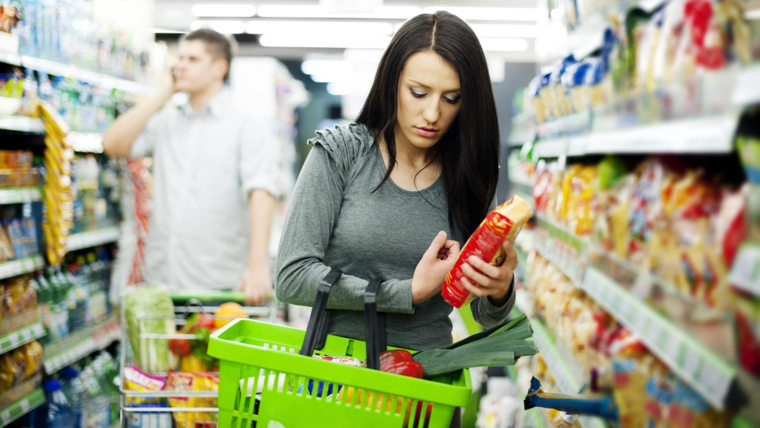Supermarkets may not be feeling so super right about now.
The industry is still processing the cataclysmic news that Amazon will buy Whole Foods; stocks are slipping, and food prices are dropping, hurting bottom lines.
Then to top it all off, the meal-kit delivery service Blue Apron debuted on the New York Stock Exchange this morning, its IPO indicating that while more people are into cooking, they're not necessarily into spending an hour in the grocery store stocking up for the week.
How can a grocery retailer earn its brick-and-mortar keep?
DIY Kits... or Prepared Food?
Picking up on the popularity of meal-kits, some chain stores like ShopRite and Hy-Vee have introduced their own meal-kit offerings. It’s a fairly smart move, to break into this niche space, but these kits tend to lack the exotic, whimsical charm that services like Blue Apron deliver, experts say.
Where grocery retailers stand to better compete is in the realm of prepared foods, a segment that is booming, with 60 percent of consumers eating prepared.
Stew Leonard’s has seen huge growth in the popularity of its prepared food offerings, and has been duly expanding on them. Each location has a number of chefs making ready-to-go meals, serving up everything from sirloin steaks to chicken enchiladas with an assortment of matching side options.
“In the 33 years I’ve worked there, one of the biggest changes I’ve seen is around prepared food,” said Arthur Weiss, director of kitchen operations at Stew Leonard's. “It’s growing about 10 percent a year right now. Customers are really looking for restaurant quality that they can just take home and eat and serve.”
Store as Experience
A big reason people shop Stew Leonards is for the in-store experience: it’s a place that showcases local seasonal foods, farm to table offerings, and gourmet foods being prepared right in front of you.
“We do a lot of manufacturing on site like making our own fresh mozzarella balls —customers love to watch those being made,” Leonard said. “And we don’t label them with the date they were made, but the hour."
Stew Leonard’s locations each tout a “farmers market” feel, Leonard says, adding that this vibe appeals to millennials because not only does that age group have a deep appreciation eating mindfully, they’re partial to experiences. If they’re going to spend half an hour in a grocery store, they want to discover new things and sample interesting foods, and essentially, get what they can’t get on their phones.
A Private Label Love Affair
Of course, customers also want a good deal, and yes, Amazon often has the best deals, and it’s really tough for supermarkets to top those deals, which is part of what makes the acquisition of Whole Foods so scary.
One strategy that has been working so far is around developing unique and inexpensive products under a private label.
These private label choices are often more affordable that the brand name stuff, and more interesting to the curious yet cost-conscious millennial — especially at Trader Joe’s where there’s an emphasis on less traditionally American foods (consider the Italian-inspired products it sells under its "Trader Giotto’s" line; or the Mexican cuisine under "Trader Jose’s").
Not only do people go crazy for this stuff that they can’t get anywhere else, and that isn’t sold online, they may feel a cozy sense of community they don’t get from an Amazon Prime or Blue Apron subscription.
And it’s critical that businesses optimize the qualities that don’t make them comparable to Amazon or Blue Apron — but that set them apart.
“The grocery stores that are merely copying them probably won’t survive." said Junfeng Jiao, an assistant professor in the community and regional planning program at the University of Texas at Austin School of Architecture.
Impulse Buying Goes Digital
Brick-and-mortar retailers of all kinds have long relied on the power of the impulse buy, but perhaps no more so than the supermarket, whose customers may be literally starving for whatever it is in front of them.
If grocery stores shift substantially to online, will the impulse buy be lost? Most likely, no, experts say. In fact, the impulse buy could get a much-needed makeover, as retailers are able to better tailor their offers.
“What technology gives us is the ability to only see the stuff that is relevant to our past purchases," said SupermarketGuru’s Lempert. "Impulse shopping in grocery will remain, but it will be much more targeted.”

For some chains, the ultimate answer is if you can't beat them, join them, building out their technology to have top-notch online and mobile functions.
But arguably more important than snazzy mobile apps and lightning-fast delivery service, experts say, are retailer’s ability to build sense of community, design private label products you can’t get anywhere else, and provide an in-store experience that enables "discovery" and upsell opportunities.
And when that happens, and stores get smart about the internet, supermarkets are going to give online grocery shopping and meal kit companies a run for their money.